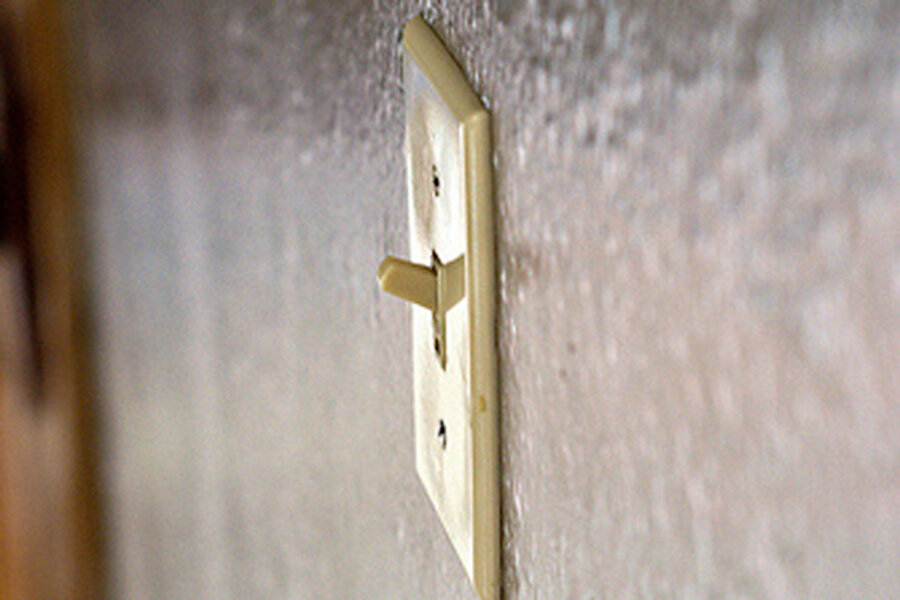How a switch-based power source will save you money
Loading...
One of the things I really liked about our house when we first moved in is how each room had multiple switches that controlled particular wall outlets. All you had to do was flip a switch in that room to cut electricity to the outlet.
At first, this was just a convenient novelty. We hooked up a few devices that we might want to turn on when we entered a room, like a digital picture frame.
After a while, though, I began to realize that this little feature can save a lot of money over time. Here are three examples.
The entertainment center Hook up your television, your DVD player, your stereo, and any other devices on your entertainment center to a single surge protector, then plug that surge protector into an outlet controlled by a switch. Whenever you leave the room, flip that switch.
What this does is it not only eliminates the power use from any devices you forgot to turn off, it also cuts out the phantom energy drain from devices that stay on standby mode. Several devices left on standby mode can easily devour 100 watts of energy, meaning that you’re down a dime during your overnight hours or during the workday. A simple flipping of the switch keeps this from happening.
The lighting In a dimly lit room, you can hook lamps up to those power outlets to provide whatever lighting arrangement you’d like. If that outlet is hooked up to a switch, you just have to flip a switch when you enter or leave the room to manage the lights. There’s no need to reach for lamp switches, and several lamps can be controlled by a single switch.
The small kitchen appliances Many of these eat electricity over time if they sit in standby mode. There’s no reason to have a food processor, a blender, a microwave, or other devices just sitting there sucking down electricity when they’re not in use. Put them all on a switch, then when you’re about to cook, flip that switch. Do your food preparation, then flip the switch back off. It’s much easier than chasing cables around.
How much does this really save you? Per use, it’s a small amount. As I noted above, an entertainment center might suck down 100 watts of power when everything is on standby. In other words, you’re devouring a kWh every ten hours, and the electric company charges anywhere from $0.10 to $0.26 per kWh.
So, let’s say you’re in your room with an entertainment center an average of four hours a day. That leaves twenty hours where your devices would be in standby mode. That’s $0.20 to $0.52 per day saved by having things on a switch.
Over the course of a month, that’s $6 to $15.60 saved by simply having things hooked up to a switch. Over a year? $72 to $187.20.
If you have any outlets in your home hooked up to switches, I recommend taking advantage of them. If you’re building a new home, plan to have some outlets hooked up to switches. If you’re an electrician, this is a straightforward home improvement project. Is it something worth hiring an electrician to do? Probably not, unless you’ve got some pro bono work coming your way.
It’s just a simple way to save some money on your energy bill. Saving money becomes as easy as flipping a switch.
This post is part of a yearlong series called “365 Ways to Live Cheap (Revisited),” in which I’m revisiting the entries from my book “365 Ways to Live Cheap,” which is available at Amazon and at bookstores everywhere. Images courtesy of Brittany Lynne Photography, the proprietor of which is my “photography intern” for this project.








